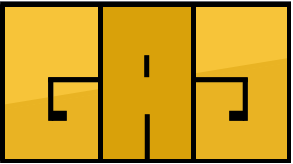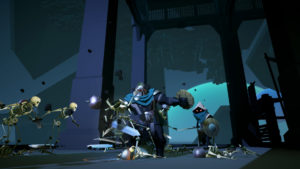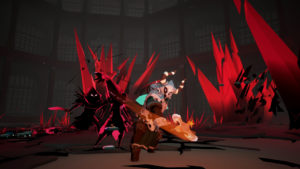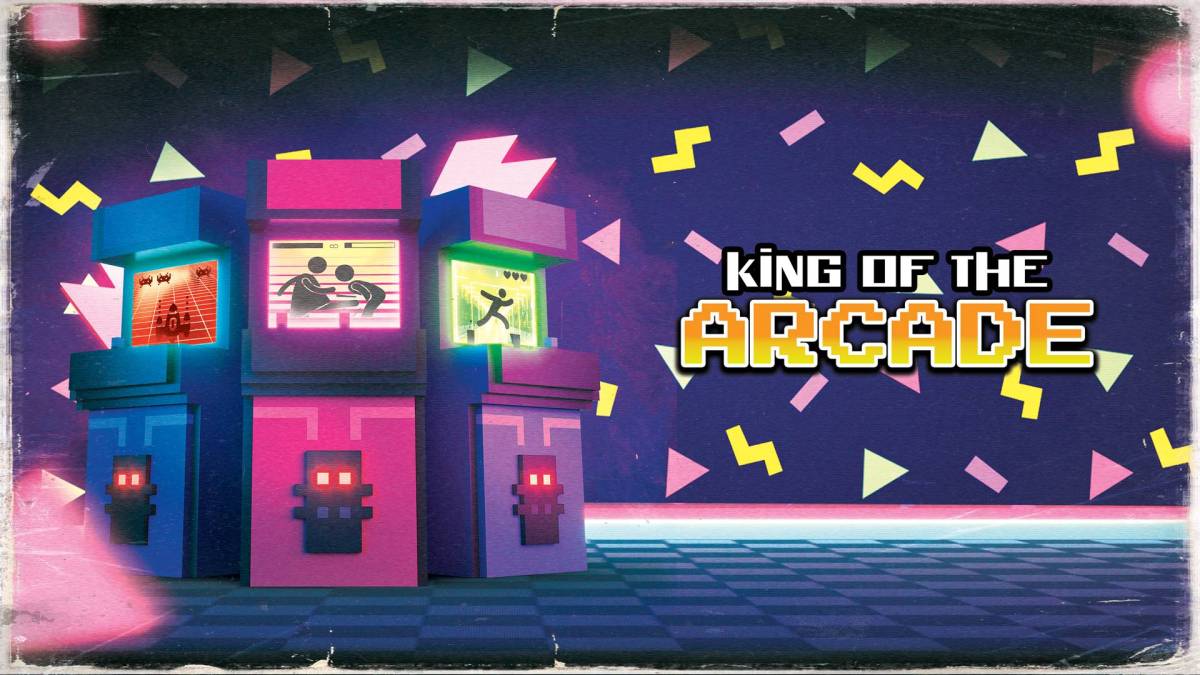
Platforms: Steam, PlayStation 4 (reviewed), and Xbox One
The word necropolis should bring fear, dread, or any number of other frightening thoughts to mind when you hear it. I mean, it does translate to “city of the dead.” Unfortunately for Necropolis, the game, it neither lives up to its name nor the games it is clearly inspired by. From this day forward I will always associate the word necropolis with mediocrity, disappointment, and missed opportunity.
As you begin your delve into the Necropolis of Abraxis you’ll have the option to choose between two adventurers. The first choice is the Brute, a large, slower moving character that can take the most punishment of the two. The other is known as the Blackguard, which is a lot more nimble but not quite as well endowed in the HP department. In my time with Necropolis I found this decision to be sort of a pseudo difficulty choice as well as the Brute seemed to be a much better choice when starting out or looking for a slightly easier experience. That being said, either way you choose to go, things aren’t going to be easy for you because Necropolis is a tough game in a variety of ways.
After deciding which character you’re going to take into the Necropolis, you’ll be guided by a talking, pyramid-shaped being known as The Brazen Head. Through The Brazen Head’s dialog and various writings you can find around the Necropolis, you might be able to piece together some semblance of a story, but I found most of it to be nonsensical and vague. All that’s truly important is knowing that your primary goal is surviving long enough to escape this hell you’ve found yourself in.
Necropolis is considered to be a “Rogue-lite”, which means each time you play it the game will be a little different than the last time and death is permanent. While death is permanent and if you die there are no continues, there are ways to improve your adventurer and carry over a bit of help in each subsequent run. This makes Necropolis slightly less brutal than a traditional Rougelike.
In Necropolis there are two types of currency to acquire and each plays a factor in evolving your experience. The first is pretty standard in the form of gems, which you’ll get for defeating enemies, opening chests, and breaking pots. These can be used to purchase items from merchants (potions, weapons, etc.) and are needed to open certain doors throughout the Necropolis. More importantly your total number of gems will be tallied at the end of each run and go into a progression system (much like you’d expect from earning XP in other games) and allow you to earn the second type of currency: Tokens of Favor.
As you reach a certain number of cumulative gems (carried across all playthroughs) or complete various objectives given to you by The Brazen Head, you’ll unlock Tokens of Favor. These tokens can be used in a few different ways, which include unlocking chests and buying new color schemes for your adventurers’ outfits. However, the most effective use for Tokens of Favor is buying codices. Each codex in Necropolis will give you some sort of buff, ranging from improving combat effectiveness to regenerating health. After purchasing a codex (each ranging anywhere from three to seventeen Tokens of Favor) they will be unlocked in all subsequent playthroughs and can be equipped at the beginning of each. Unfortunately these codices highlight one of Necropolis’ biggest issues – just how vague it is.
As with most “Rogue-lite” games, Necropolis is about discovery and exploration. Figuring out what each new codex, potion, or scroll does is part of the fun. Unfortunately, figuring out exactly what most of these actually do is easier said than done. In my time with Necropolis, I used some of the same items multiple times and at this point I still don’t completely understand what some of them do. What’s even worse is that the descriptions of these items are just as vague and nonsensical as the story most of the time. While having one-off items like potions and scrolls follow this trend isn’t completely unacceptable, the codices are the worst offenders when it comes to this pattern of vagueness. With codices being items that are supposed to reward your play and help you, it’s kind of a drag that you almost need a guide to figure out what most of them even do. After spending Tokens of Favor (that aren’t easy to come by in the first place), the possibility of getting something that you consider useless is kind of like a slap in the face.
If you’ve ever played one of From Software’s Souls games, then you’ll be instantly familiar with the combat of Necropolis. Most often, it has you using a melee weapon in one hand and shield in the other. It won’t be as easy as just hacking and slashing as you have limited stamina and with each swing of your weapon, block with your shield, jump, roll, or sprint some of your stamina will be depleted. Being strategic with how you’ll approach combat is a must because if you overestimate just how much you can do with your stamina, you’ll probably end up another corpse in the Necropolis.
While the combat does its job and works just fine, a majority of the time I couldn’t help but feel like I’d just rather be playing a Souls game if I was going to go through all of this punishment because there’s just so little payoff in Necropolis. There’s no feeling of excitement wondering what could be around the next corner because the levels are so bare, lifeless, and just feel far too similar throughout. Enemies drop the same weapons (whatever they are equipped with) time and time again. Since the weapons work on a tier system (tier 0, tier 1, etc.) all of them in the same tier feel pretty much identical as they will either kill a little slower or a little faster. It just feels overall lacking and can lead to a stale experience if you’re playing through multiple runs in a single sitting.
To make matters worse, Necropolis also suffers from more than its fair share of slowdown and frame rate dips. On top of that, I also had plenty of issues with wonky camera angles and control, especially when targeting enemies. These weren’t game breaking, but they happen far too often and enough to be an annoyance, especially when you’re in the heat of battle. When combat is arguably the most important part of your game, this is just another mark on the long list of Necropolis’ disappointments.
If you break Necropolis down piece by piece, you’ll find that it doesn’t live up to its inspirations and realize that you can find each piece done better in other places. That being said, when all of those parts are put together you do end up with a type of game that you can’t really find anywhere else. Unfortunately it’s just not all that fun after the first dozen or so playthroughs when you still have no idea what most items do and you’ve been looking at the same environments and gear run after run. Simply put, Necropolis lacks the lasting appeal that most games of its ilk offer. If you’re looking for a challenge or a new “Rogue-lite“, you could certainly do worse, but Necropolis just leaves far too much to be desired and is by no means a must-play experience.







